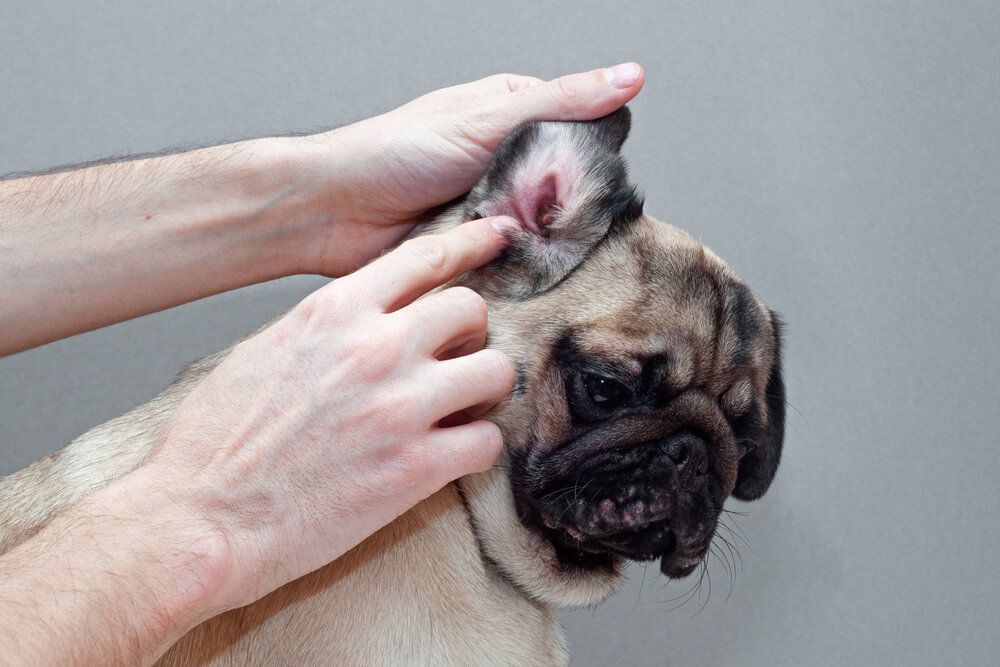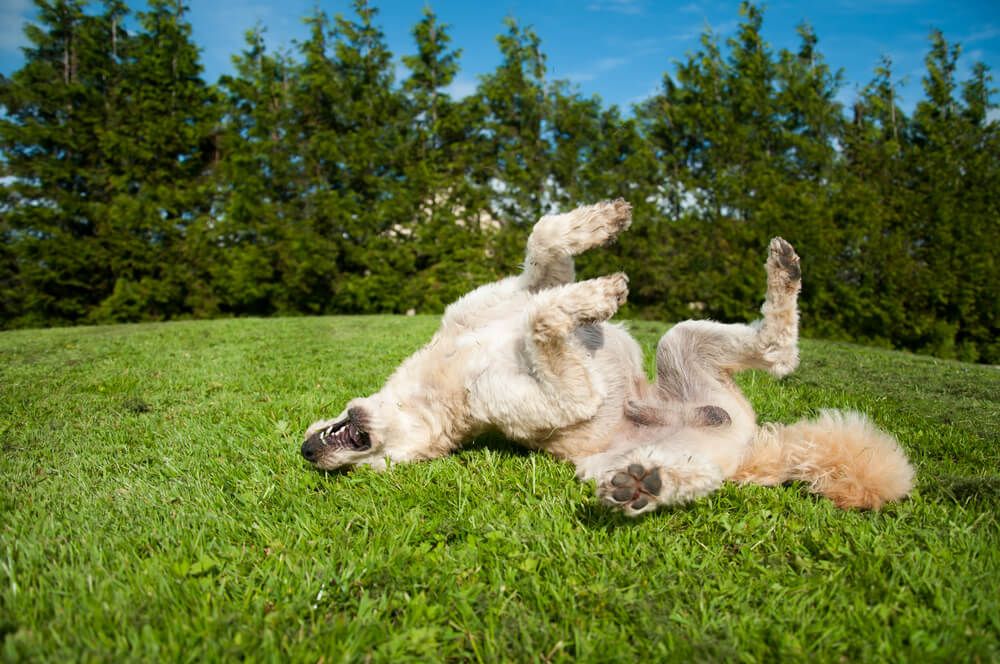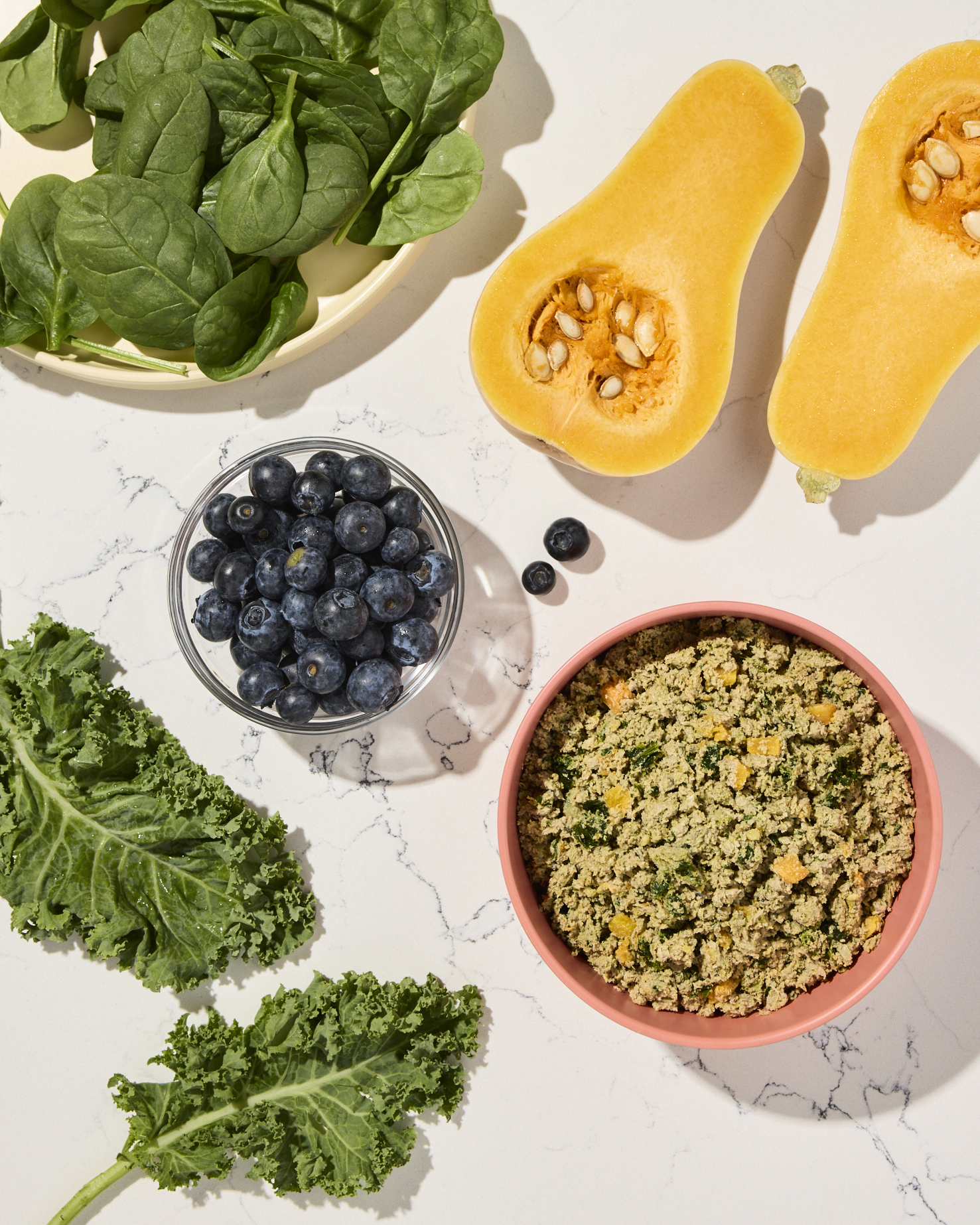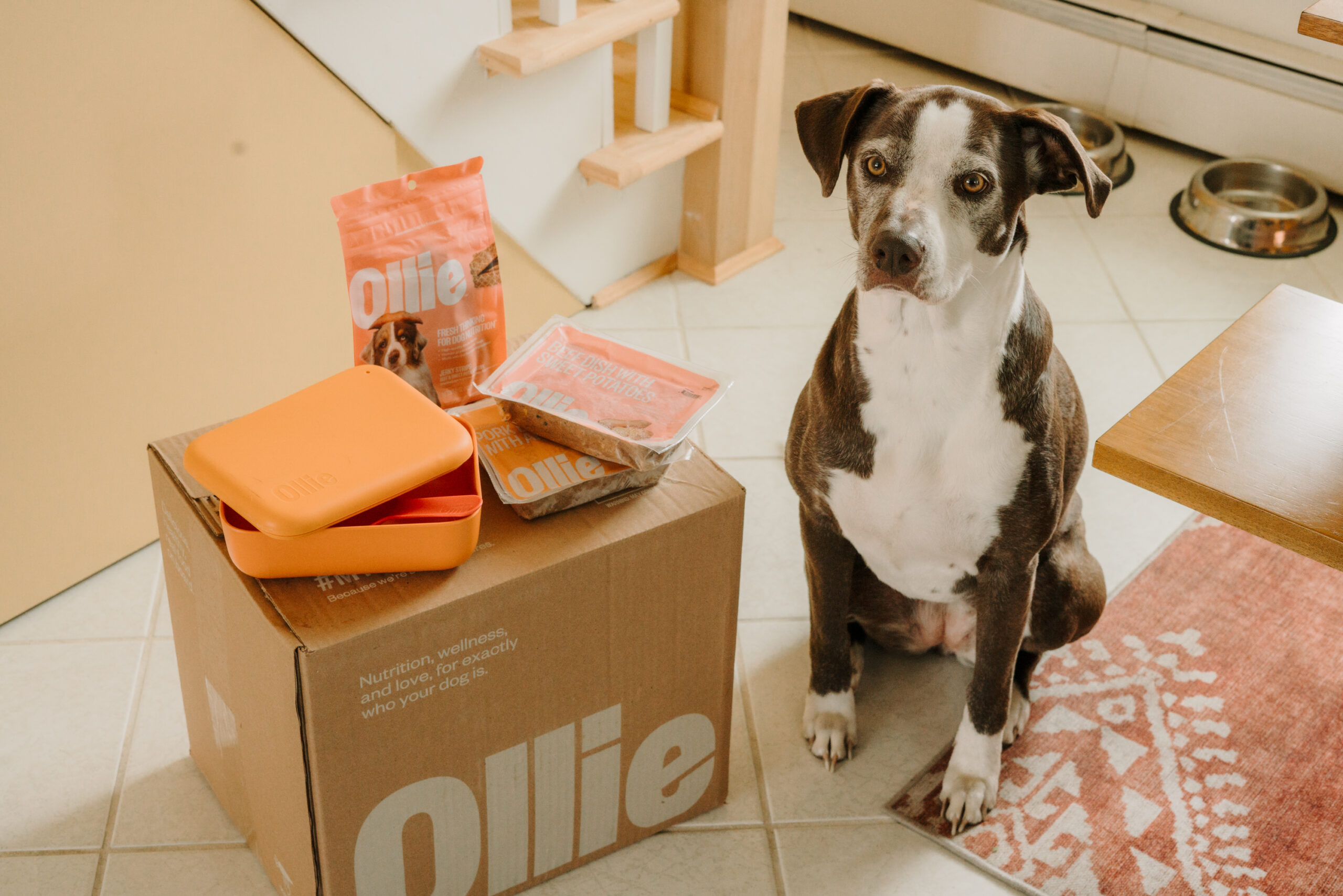Hey Ollie blog readers! We’re offering you an exclusive 60% OFF your starter box! Try now!
Yeast dermatitis is an inflammatory skin condition that occurs fairly regularly for many dogs. It is especially common to see this in skin folds, ears, between their paw pads, or in other hot, humid areas of the body. The small spaces combined with heat and humidity encourage yeast to reproduce until it becomes a problem. How do you know if your dog is dealing with yeast? We learned about the signs and symptoms your pup may have a yeast infection – and how to treat them!

What are the signs and symptoms of a yeast infection in dogs?
Odor
If your pup has an odor around their ears or paws (and we don’t mean that Frito smell on their toes – that’s just from normal perspiration) yeast may be the culprit.
Skin changes
If you notice your pup’s skin is crusty, flaky, red, itchyor even a bit smelly, they might have yeast. These are also symptoms of other skin conditions including allergic reactions so it is important to get this checked out so you can get your pup the right treatment.
Reoccurring ear infections
If your pup has an ear infection more often than not, yeast may be at least part of the issue. Your dog’s doctor can do a culture of the infected ear to determine if there is a presence of yeast or bacteria and what kind, this way they can provide the most effective treatment
Sticky, yellow, or green discharge
If your pup’s ear infection(s) are coupled with a sticky discharge, this is another sign that yeast may be to blame. Even if you’ve cleaned your pup’s ear before a vet visit, it is important to let your vet know what you saw.
Persistent itchiness and inflammation
If your pup is prone to inflammation and is constantly itchy – this may be another clue that your dog has an overgrowth of yeast. Your vet can help you with topical treatments like shampoos to help keep the yeast at bay or eliminate it.

What causes a yeast infection?
According to Dr. Tammy Hunter of VCA Hospitals, “A common cause of a yeast skin infection is an increase in the amount of oils produced on the skin. This is most frequently associated with allergic skin disease. Another common cause of excess skin oils is seborrhea oleosa.” If you aren’t familiar with seborrhea oleosa, it produces oily, smelly, itchy, inflamed and infected skin.
Yeast infections can also happen when your dog’s skin is irritated by something like seasonal allergies or an autoimmune response.
If your dog goes to doggie daycare or frequents the local dog parks, you don’t need to worry. Yeast infections are not contagious nor are they passed from dog to dog so a little yeast (or even a lot of yeast) won’t put a dent in your dog’s social life.

Breeds that are susceptible to yeast infections
If you have ever considered that your dog’s breed is a factor in how often they deal with yeast issues, you may be correct. There are some breeds that appear to be genetically predisposed to yeast infections. These breeds include the West Highland White Terrier, Basset Hound, Cocker Spaniel, Silky Terrier, Australian Terrier, Maltese, Chihuahua, Poodle, Shetland Sheepdog, Lhasa Apso, and Dachshund.
How to treat and prevent yeast infections at home
While you do want to make sure your pup has seen a vet to confirm that what you are seeing is yeast and rule out anything more serious, yeast infections can usually be treated at home.
The best way to prevent yeast infections in the first place is to make sure you dry your dog thoroughly after they get out of the water. This includes taking a bath and swimming of any kind.
You also want to keep any excess hair trimmed and clean. Your groomer will thank you for this one too as it will prevent matting. Ask your groomer to trim the hair between your pup’s paw pads if they are prone to yeast in their feet.
If your pup does get a yeast infection, your vet may recommend you switch to an antifungal shampoo. Your vet may also ask you to give your dog baths more frequently to help kill the yeast. For some dogs, this is enough to keep the problem from recurring. Other dogs may need more intense treatment like perscription creams or oral medications.
The Ollie blog is devoted to helping pet parents lead healthier lives with their pups. If you want to learn more about our fresh, human-grade food, check out MyOllie.com.
Tagged As:

The nutrition your dog needs,
the food they want.

Enjoying our articles? Subscribe our Newsletters and get new articles directly to your inbox
You might also like
4 June 2025
5 MINS READ
How Can Fresh Dog Food Help with Weight Management?
Maintaining a healthy weight is one of the most important aspects of your dog’s overall health and longevity. Being overweight or underweight can result in health complications and conditions that…
23 May 2025
5 MINS READ
Why Fresh Dog Food Makes Happier, Healthier Dogs That Live Longer
Every pup parent wants their dog to live a long, happy life, and the path to a healthier, happier dog starts with what’s in their bowl. Recent research and expert insights reveal that fresh dog …
by Ollie Pets
23 May 2025
8 MINS READ
Why Human-Grade Ingredients Matter for Dogs with Health Issues
For dogs with allergies, sensitive stomachs, or other health concerns, a higher quality of life starts with food made from higher quality ingredients. The right nutrition can make a significant di…
by Ollie Pets







